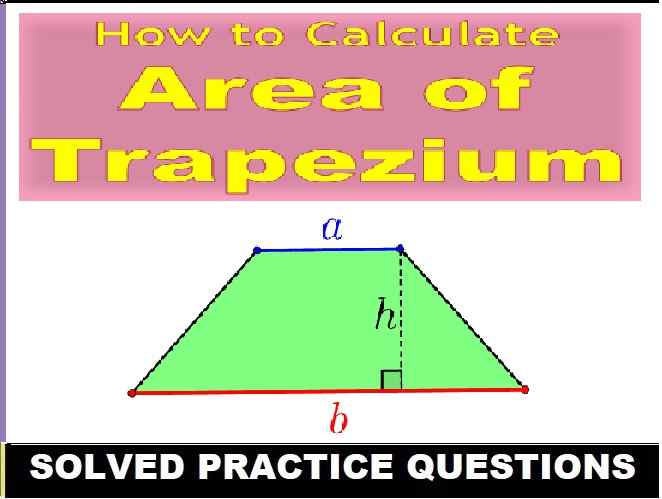MCQs Surface Chemistry for ISC Class-12 sem-2 exam preparation. These MCQ / Objective Type Questions is based on latest reduced syllabus according 2021-22 session on bifurcated pattern. Main motto of MCQ Type Question is cracking the next upcoming Sem-2 exam of council. Visit official website CISCE for detail information about ICSE Board Class-12 Chemistry
MCQs Surface Chemistry for ISC Class-12
| Board | ISC |
| Class | 12th (XII) |
| Subject | Chemistry |
| Chapter | Surface Chemistry |
| Syllabus | on bifurcated syllabus (after reduction) |
| Session | 2021-22 |
| Bifurcated | Sem-2 |
| Topic | MCQ / Objective Type Question |
Sem-2 Exam MCQs Surface Chemistry for ISC Class-12
Question:-1. When a small amount of FeCl3 is added to a freshly precipitated Fe(OH)3, b reddish brown colloidal solution is obtained. This phenomenon is known as
(a) dialysis
(b) peptization
(c) protection
(d) dissolution
Ans:-(c) protection
Question 2 : – Milk is colloid in which
(a) Liquid is dispersed in liquid
(b) Gas is dispersed in liquid
(c) Sugar is dispersed in water
(d) Solid is dispersed in liquid
Ans:-(a) Liquid is dispersed in liquid
Question 3 :- Which one of the following impurities present in colloidal solution cannot be removed by electrodialysis?
(a) Sodium chloride
(b) Potassium sulphate
(c) Urea
(d) Calcium chloride
Ans :-(c) Urea
Question 4:–. All colloids
(a) are suspension of one phase in another
(b) are two-phase systems
(c) contain only water-soluble particles
(d) are true solutions.
Answer: (b) are two-phase systems
Question 5 :-. Movement of dispersion medium under the influence of electric field is known as
(a) electrodialysis
(b) electrophoresis
(c) electroosmosis
(d) cataphoresis
Ans :-(c) electroosmosis
Question 6. The movement of colloidal particles towards the oppositely charged electrodes on passing electric current is known as
(a)Tyndall effect
(b)Cataphoresis
(c) Brownian movement
(d) None of these
Ans:-(b)Cataphoresis
Question -7. The protective power of lyophilic colloidal sol is expressed in terms of
(a) coagulation value
(b) gold number
(c) CMC (Critical Micelle Concentration)
(d) oxidation numbers
Ans:- (b) gold number
Question -8 The coagulation values in millimoles per litre of the electrolyte for the coagulation of As2S3 sol are given
I. NaCl (52)
II. BaCl2 (0.69)
III. MgSO4 (0.22)
The correct order of coagulating power is
(a) I > II > III
(b) II > I > III
(c) III > II > I
(d) III > I > II
Ans:- (c) III > II > I
Question –9. 3g of activated charcoal was added to 50 ml of acetic acid solution (0.06 M) in a flask. After an hour it was filtered and the strength of filtrate was found to be 0.042 M. The amount of acetic acid adsorbed per gram of charcoal is
(a) 42 mg
(b) 54 mg
(c) 18 mg
(d) 36 mg
Ans:- (b) 54 mg
Hint :-Molarity of CH3COOH adsorbed
= 0.06 – 0.042 = 0.018
Number of millimoles of CH3COOH
adsorbed = 0.018 × 50 ml = 0.90
Amount = 0.90 × 60 = 54 mg
[∵ molar mass of CH3COOH = 60 g mol-1]
Question –10. During the adsorption of gas on the surface of solid, which of the following is true?
(a) ∆G < 0, ∆H > 0, ∆S < 0 (b) ∆G > 0, ∆H < 0, ∆S < 0
(c) ∆G < 0, ∆H < 0, ∆S < 0
(d) ∆G < 0, ∆H < 0, ∆S > 0
Ans:- (c) ∆G < 0, ∆H < 0, ∆S < 0
Question –11. The correct ascending order of adsorption of the following gases on the same mass of charcoal at same temperature and pressure is
(a) CH4 < H2 < SO2
(b) H2 < CH4 < SO2
(c) SO2 < CH4 < H2
(d) H2 < SO2 < CH4
Ans:- (b) H2 < CH4 < SO2
Question –12. The formation of micelles takes place only above
(a) Inversion temperature
(b) Boyle’s temperature
(c) Critical temperature
(d) Kraft temperature
Ans :- (d) Kraft temperature
Question –13. Colloidion is 4% solution of which one of the following in alcohol-ether mixture.
(a) Nitroglycerin
(b) Cellulose acetate
(c) Glycol dinitrate
(d) Nitrocellulose
Ans :- (d) Nitrocellulose
Question –14. The best coagulant for the precipitation of Fe(OH)3 sol is
(a) Na2HPO3
(b) NaNO3
(c) Na3PO4
(d) Na2SO4
Ans :-(c) Na3PO4
Question –15. Which is favourable for physical adsorption?
(a) High T and high P
(b) High T and low P
(c) Low T and high P
(d) T and P do not affect
Ans :–(c) Low T and high P
Question –16. The stability of lyophobic sols is due to
(a) adsorption of covalent molecules on the colloid
(b) the size of the particles
(c) the charge on particles
(d) Tyndall effect.
Ans :-(c) the charge on particles
Question –17. Gold sol can be prepared by
(a) Hydrolysis of AUCl3
(b) Oxidation of Gold by aqua-regia
(c) Peptization
(d) Reduction of AUCl3 with HCHO solution.
Ans:-(d) Reduction of AUCl3 with HCHO solution.
Hint :-2AuCl3 + 3HCHO + 3H2O → 2Au + 3HCOOH + 6HCl
Question –18. According to adsorption theory of catalysis, the speed of the reaction increases because
(a) the concentration of the reactant molecules at the active centres of the catalyst becomes high due to adsorption.
(b) in the process of adsoption, the activation energy of the molecules becomes large.
(c) adsorption produces heat which increases the speed of the reaction.
(d) adsorption lowers the activation energy of the reaction.
Ans:- (d) adsorption lowers the activation energy of the reaction.
Question –19. Which shape selective catalyst is used to convert alcohol to gasoline?
(a) Trpsin
(b) Calgon
(c) ZSM-5
(d) Zeigler-Natta catalyst
Ans :-(c) ZSM-5
Question –20. When a small amount of FeCl3 is added to a freshly precipitated Fe(OH)3, b reddish brown colloidal solution is obtained. This pheno¬menon is known as
(a) dialysis
(b) peptization
(c) protection
(d) dissolution
Ans :- (c) protection
Question –21. Lyophillic colloids are stable due to
(a) charge on the particles.
(b) large size of the particles.
(c) small size of the particles.
(d) layer of dispersion of medium on the particles.
Ans :-(d) layer of dispersion of medium on the particles.
Question –22. Cottrell precipitator is used to
(a) precipitate mud from muddy water.
(b) precipitate carbon particles from smoke.
(c) purify the ordinary drinking water.
(d) precipitate salts in qualitative analysis
Ans :-(b) precipitate carbon particles from smoke.
Question –23. Peptization is a process of
(a) precipitation of colloidal particles.
(b) purification of colloids.
(c) dispersing precipitate into colloidal solution.
(d) movement of colloidal particles in the electric field
Ans :-(c) dispersing precipitate into colloidal solution.
Question –24. An emulsifier is a substance which
(a) stabilises the emulsion.
(b) homogenises the emulsion.
(c) Coagulates the emulsion.
(d) Accelerates the disperson of liquid in liquid.
Ans:-(a) stabilises the emulsion.
Question –25. In the following questions a statement of assertion followed by a statement of reason is given. Choose the correct answer out of the following choices.
Assertion: An ordinary filter paper impregnated with collodion solution stops the flow of colloidal particles.
Reason: Pore size of the filter paper becomes more than the size of colloidal particle.
(a) Both assertion and reason are correct.
(b) Assertion is incorrect but reason is correct.
(c) Assertion is correct but reason is incorrect.
(d) Both assertion and reason are incorrect.
Ans:- (c) Assertion is correct but reason is incorrect.
Question 26. Tyndall effect confirms the
(a) gravity effect on the sol. particles
(b) light scattering by the sol. particles
(c) heterogeneous nature of sols.
(d) Brownian motion of the sol. particles
Ans:-(c) heterogeneous nature of sols.
Question -27 Presence of traces of arsenious oxide (As2O3) in the reacting gases SO2 and O3 in presence of plantinised asbestos in contact process acts as
(a) catalytic promoter
(b) catalytic poison
(c) dehydrating agent
(d) drying agent
Ans:-(b) catalytic poison
Question 28 .A colloidal system is which liquid is dispersed phase and solid is dispersion medium is classified as
(a) gel
(b) sol
(c) emulsion
(d) aerosol
Ans :-(a) gel
Question 29. Substances which behave as normal electrolytes solution at low concentration and exhibit colloids properties at higher concentration are called
(a) lyophilic colloids
(b) lyophobic colloids
(c) macromolecular colloids
(d) associated colloids
Ans : (d) associated colloids
Question 30. The size of colloidal particles ranges between
(a) 10-7 – 10-8 cm
(b) 10-9 – 10-11 cm
(c) 10-4 – 10-7 cm
(d) 10-2 – 10-3 cm
Ans:-(c) 10-4 – 10-7 cm
Question 31. Why is alum added to water containing suspended impurities?
(a) To make acolloidal solution
(b) To coagulate the suspended impurities
(c) To remove impurities of calcium and magnesium
(d) To protect the colloidal solution from gening precipitated
Ans:- (b) To coagulate the suspended impurities
–: End of MCQs Surface Chemistry for ISC Class-12 :–
-: also visit :-
Please share with your ICSE friends if it is helpful
Thanks


